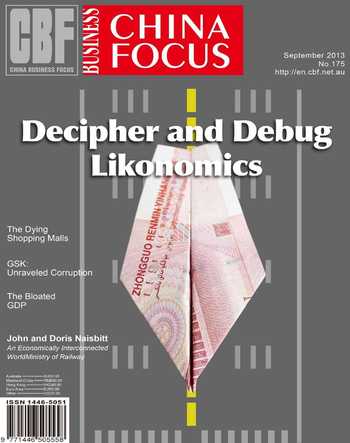China hikes investment in US and Australia
Data from Chinas commerce ministry on July 17 shows overseas investment increased significantly in the period, with money flowing into the United States almost quadrupling, jumping 290 per cent year-on-year.
It almost doubled into resourcerich Australia, where it went up 93 per cent, and investment into the European Union rose 50 per cent.
However, investment into Japan, with which China is embroiled in a row over disputed islands in the East China Sea, fell 9.1 per cent.
Ministry spokesman Shen Danyang told reporters the fall was mainly a result of a widening choice of investment destinations for cash-rich Chinese companies, as well as “investment barriers”in Japan.
“Whether the Japanese economy and its investment environment is the most ideal among all the countries and regions for (Chinese) companies to go is up to the market and the companies to decide,” he said.
In May Chinas Shuanghui International announced it would buy US meats giant Smithfield for $US4.7 billion, while Australia is a crucial source of commodities for Beijing.
The most appealing sectors for Chinese investors were construction, which surged 541 per cent in JanuaryJune, science and technology (151 per cent), mining (142 per cent) and real estate (110 per cent).
Foreign direct investment (FDI) into China rose 4.9 per cent year-onyear during the first half of 2013, despite slowing growth in the worlds second-largest economy.
Incoming FDI, which excludes financial sectors, increased to $US62 billion from January through June, the ministry said. For June itself, it rose 20.1 per cent year-on-year to $US14.4 billion.
Japan invested $US4.7 billion in the six-month period, up 14.4 per cent on year, with EU investment 14.7 per cent higher at $US4.0 billion and that from the United States rising 12.3 per cent to$US1.8 billion.
The vast majority of investment into China comes from a group of 10 Asian countries and regions including Hong Kong, Taiwan, Japan and Singapore.
Inflows from those economies gained 5.3 per cent on-year to $US53.8 billion during the first half.
Inward investment fell in 2012 for the first time in three years as clouds gathered over the global economy such as in Europe, while China suffered its own economic slowdown and political tensions soared with Japan.
“It is premature to come to the conclusion FDI has recovered with the single month data in June,” Shen said.“But FDI was relatively stable in the first half and gradually rebounded.
“We expect FDI to maintain steady growth in the second half of the year.”
Chinas economy grew at its slowest pace in 13 years in 2012 as gross domestic product expanded 7.8 per cent.
In the first half of this year growth slipped again to 7.6 per cent, Beijing said.

